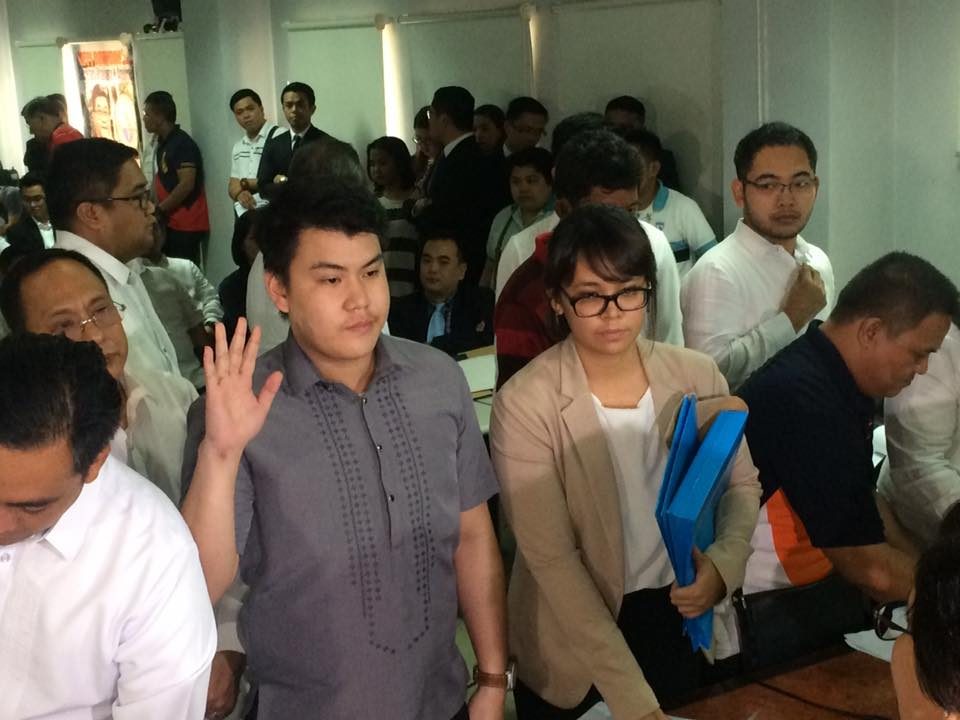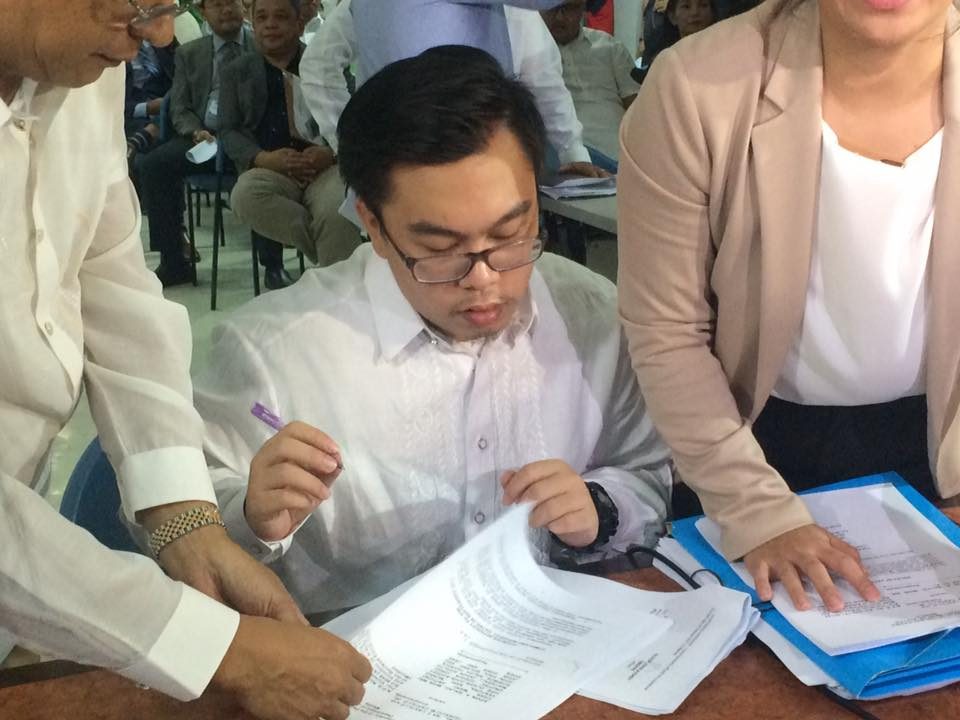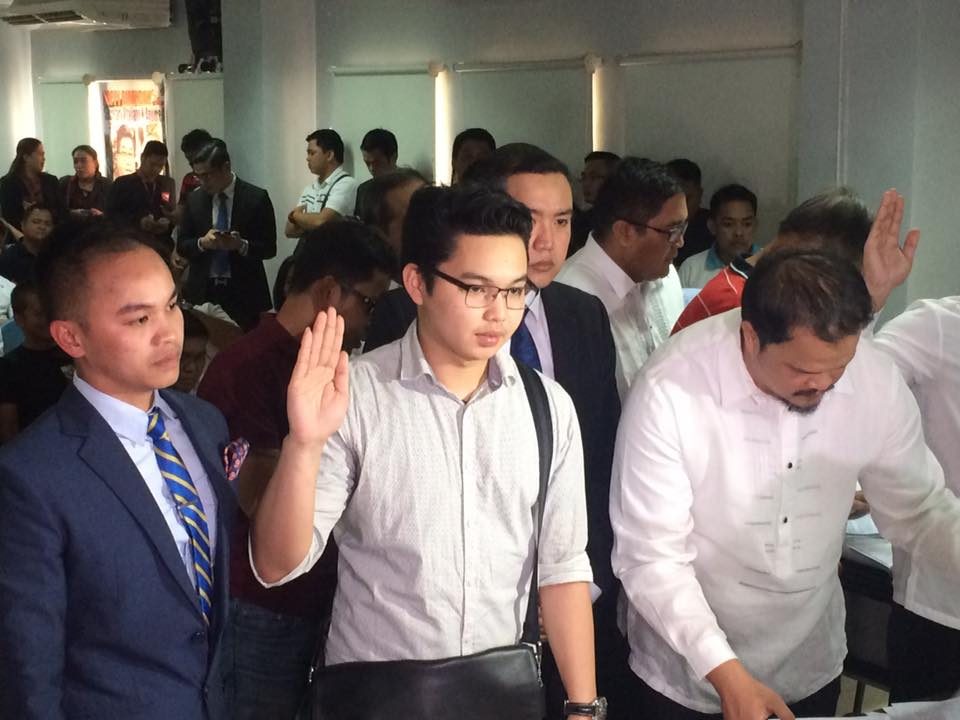SUMMARY
This is AI generated summarization, which may have errors. For context, always refer to the full article.

MANILA, Philippines – Axel Munro Hipe is in a very tight situation.
In a counter-affidavit submitted to the Department of Justice (DOJ) on Tuesday, October 24, he tried to get out of his predicament by citing his rights as a respondent, including the right to privacy of communication. Hipe argued that group chats on Facebook that implicate him are inadmissible evidence.
Hipe’s name appeared on a Facebook group chat where alleged members of the Aegis Juris fraternity planned the initiation rites that freshman law student Horacio “Atio” Castillo III would eventually attend.
It also showed that Hipe was the one who asked for the number of a certain “Popoy” on the morning of September 17, saying there was an “emergency.”
Popoy is John Paul Solano, Hipe’s fraternity brother who initially lied to authorities and pretended he was a stranger who found Castillo’s body dumped on a sidewalk in Tondo, Manila.
Solano would eventually squeal on his frat brothers, including Hipe.
Solano told a Senate panel that it was Hipe who opened the door to their fraternity library on September 17. It was also the day Castillo was declared dead on arrival at the Chinese General Hospital, where Solano and company brought him instead of the nearest hospital – the University of Santo Tomas (UST) Hospital inside their own campus.
After the door to the fraternity library was opened, Solano said Hipe told him that Castillo had collapsed, after which they both administered cardiopulmonary resuscitation (CPR) on the neophyte.

Solano said he was on board a motorcycle, while Hipe rode a black Toyota Fortuner in a convoy to the Chinese General Hospital. Castillo’s body was in a red Mitsubishi Strada. Both vehicles would eventually leave, and Solano would be alone to answer questions from officials.
Hipe was identified as master initiator of Aegis Juris.
Others Solano named seeing on that fateful day were Oliver John Audrey Onofre, Arvin Balag, Mark Anthony Ventura, Zack Abulencia, and Dan Ragos.
On Tuesday, Hipe, Onofre, and Ventura attended the resumption of the DOJ’s preliminary investigation into Castillo’s death. Rappler was able to get a copy only of Hipe’s counter-affidavit.
Hipe’s defense
Without addressing key accusations, Hipe’s counter-affidavit conveniently makes use of the law to say there is no probable cause to charge him with murder and violation of the Anti-Hazing Law.
First, Hipe said that the Facebook messages are inadmissible evidence, “without admitting that he indeed sent” them. It would violate his right to privacy of communication, according to him.
Hipe also said his membership in Aegis Juris does not prove that he participated in the initiation rites that led to Castillo’s death. He said it is his constitutional right to be part of an association.
Hipe also addressed the allegation that a text message sent to Castillo’s mother Carmina, asking who she was, came from his phone.
“The mere fact that complainant Carmina Castillo received a text message asking who she was from the purported cellular phone number of respondent likewise [does] not establish probable cause that he violated the Anti-Hazing Law or that he murdered Atio,” Hipe’s counter-affidavit reads.
Other issues, such as his presence at the fraternity library on September 17, were not addressed. Hipe also refused to give DNA samples to check against those found on the paddle recovered at the fraternity library.
Hipe, in his counter-affidavit, also echoed Solano’s defense that Castillo may have died of a pre-existing heart condition, and not due to hazing.
Castillo’s parents denied their son had a heart condition, and cited an autopsy pointing to hazing-induced blunt trauma. The Solano camp countered this, saying the medico-legal report never mentioned any cause of death, but instead found that Castillo had hypertrophic cardiomyopathy (HCM), a disease in which part of the heart muscle is enlarged.
Trangia’s counter-affidavit

Ralph Trangia is implicated in the case because the red Mitsubishi Strada that brought Castillo’s body to the Chinese General Hospital belongs to his family. The vehicle’s registration was traced to his father, Antonio, who is also included in the complaint.
Solano said it was the Trangia family’s driver, Romeo Laboga, who drove them to the hospital. Solano said he didn’t see Ralph that day.
But when news of Castillo’s death broke, Ralph and his mother Rosemarie immediately flew to Chicago in the United States – a move that was tagged as a sign of guilt.
In his counter-affidavit, Trangia said it was never proven that he was the one who invited Castillo to join Aegis Juris.
Trangia is said to be a new member of Aegis Juris, as was Castillo, and thus, would have been required to be at the initiation rites too.
Trangia said this conclusion is not backed by substantial evidence.
“The law does not presume participation in the planning just because one is a new member of the fraternity. What the law does is to make those, who actually participated in the planning, liable as principal in the crime of hazing,” Trangia said in his counter-affidavit.
On their family vehicle, Trangia said that the Anti-Hazing Law only recognizes the presence of a person and not the presence of a person’s property.
“Participation in hazing cannot be presumed on the basis of another presumption, i.e., speculative presence of a person gathered from another presence of such person’s belonging or property,” he said.
On his departure for the US, Trangia cited a Supreme Court ruling which “recognized the natural tendency of a mother to remove the cloud of suspicion over a son who she believes is, or could be, persecuted.”
The DOJ earlier offered Trangia admission to the Witness Protection Program (WPP).
Hearings at the DOJ will resume on October 30 and November 2. – Rappler.com
Add a comment
How does this make you feel?
There are no comments yet. Add your comment to start the conversation.